Centuries after Maratha warrior king Shivaji built a temple to honour the 12th-century family deity of the Kadamba dynasty, a Mumbai architect collaborates with the Goan archaeology department on a Rs 7 crore restoration project
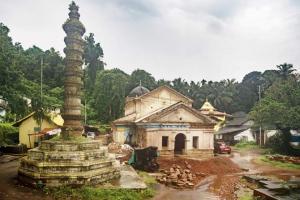
Narve, Goa: The Mario Gallery in Panaji re-imagines the chaos of Goan life in more ways than one. Late illustrator Mario Miranda's prints that are sold as souvenirs here, drift from squalid fish markets to wasted bars. But, a bucolic sketch of Shri Saptakoteshwar Temple built by Chhatrapati Shivaji in Bicholim village of Narve in North Goa, in 1668, offers relief from these busy drawings. In this sketch, Miranda remembers the temple's walls, overlaid with earthy clay tiles, in white. It's the coat of paint that the structure retained for most part of the 20th century, before Fundação Oriente, a Portuguese cultural organisation, undertook repairs in the early 1980s. Since then it has been concretized, and in a bright shade of blue and yellow.
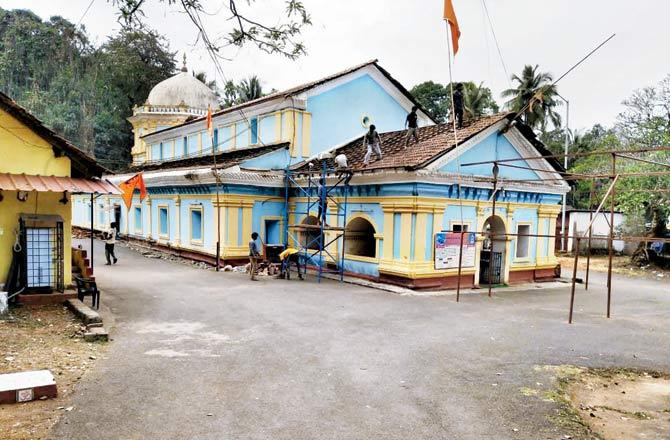
ADVERTISEMENT
The temple complex is preparing for yet another transformation that is part of a R7 crore-heritage restoration project, a first of its kind since the structure was listed as a protected monument by the Directorate of Archives and Archaeology of Goa, in 1983. "Saptakoteshwar doesn't have heritage value alone; it is also of cultural, aesthetic, archaeological and sentimental importance to Goa's history," says Dr Varad S Sabnis, assistant superintending archaeologist at the directorate headquarters in Panaji. "The temple cannot be viewed in isolation. It's part of an eco-system, and we wanted to restore all of it."
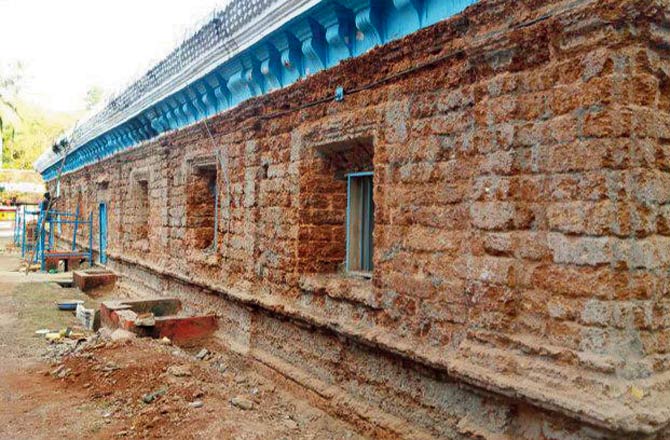
Helmed by conservation architect Rahul Chemburkar of Vastu Vidhan Projects, and contractor Nilesh Thakkar, the initiative marks the 350th anniversary of Saptakoteshwar temple. The bells at the temple have never fallen silent despite the many interventions the region has experienced, following occupations by the Bahmani Sultanate in the 14th century, and later by the Portuguese. Earlier this year, members of the temple trust, Shri Saptakoteshwar Deosthan Panchayatan decided that they'd temporarily discontinue prayer services to make the structure available for restoration.
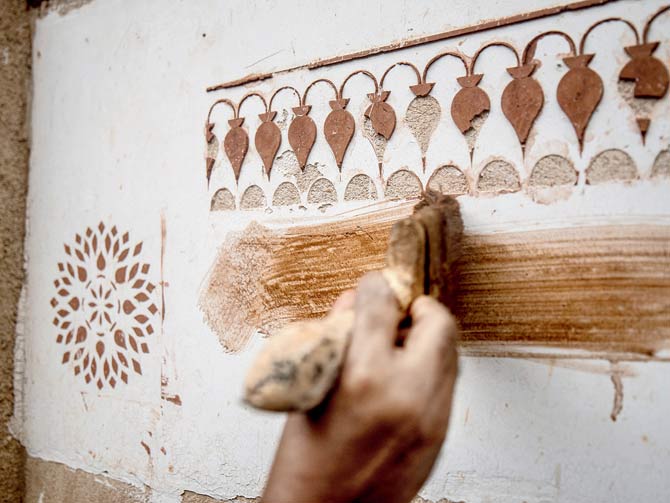
The idol dates back to the 12th or 13th century and belonged to the royal Kadamba dynasty, whose members were ardent followers of Saptakoteshwar, an avatar of Shiva. "It's the royal deity of Goa," says Sabnis. The original temple was located in Porne Tirth, Naroa, on the island of Divar, which is separated from Narve by sea. "In Divar, the temple was destroyed twice. First, during the Islamic invasion, and then by the Portuguese, who built a chapel there," the archaeologist adds.

Veteran writer-historian and an authority on Maratha history, Balwant Moreshwar Purandare, shares that when the temple was destroyed, the then Portuguese governor placed the Shiv ling on the edge of a farm. "Legend has it that it was placed such that one would have to walk over it, to go to the other side. But, the locals refused. The governor then installed it beside a well, so that people would have to place their feet on it, while drawing water. Finally, a local administrator, was allowed to take the deity with him, on the promise that it would not be given any royal treatment."
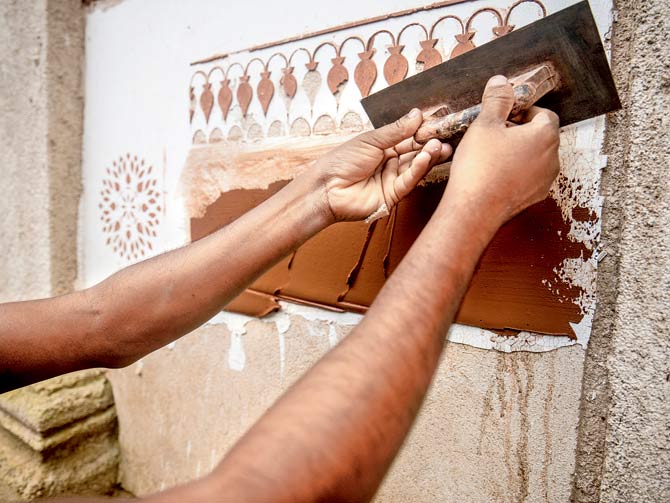
The idol was shifted to Navre in the early 17th century. Families, who had suffered persecution at the hands of the colonisers, also moved there, and set up a humble shrine. At the time, the area served as a boundary that separated the Maratha empire from the land that the Portuguese controlled. "When Chhatrapati Shivaji learnt that the idol had been brought here, he took it upon himself to build the temple," says Purandare. "It was both, a political strategy, and an effort to revive the religion of the land," adds Sabnis. A 17th century rock plaque installed above the arch at the temple entrance, carries an inscription in Devanagari, pointing out the year in which the Maratha king ordered the construction of the temple.
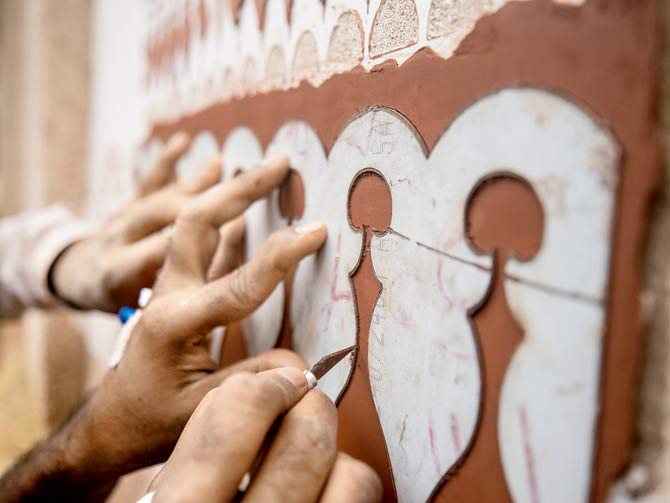
Chemburkar defines the architectural character of this temple as "Goan". While the gable (triangular portion of a wall between the edges of intersecting roof pitches) on the front, the high-ceiling roof (tiled and supported by wooden rafters), and the wide assembly hall that looks more like a nave, suggest influences from a Goan chapel, the dome with its octagonal base carries Saracenic features. "We can't be sure what the structure may have looked like when Shivaji built it, but this one definitely doesn't follow the rules of typical temple architecture," admits Chemburkar.
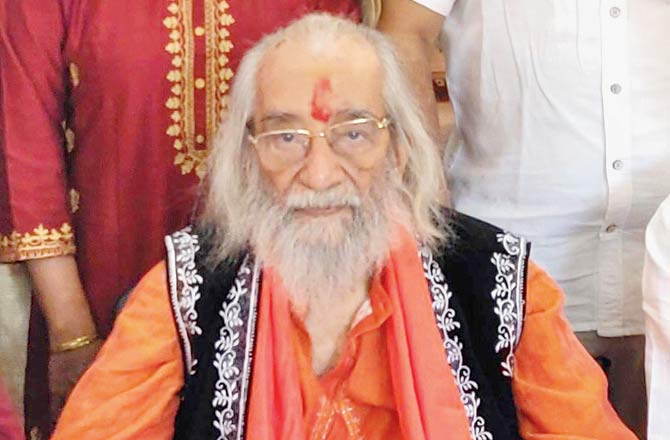
Legend has it that the governor installed the idol beside a well, so that people would have to place their feet on it, while drawing water, says Balwant Moreshwar Purandare
His aim, he says, was to recreate the original structure, as far as possible. Unfortunately, they had no photographic evidence or drawings from before the 20th century. But, a closer observation of the sanctum, also known as the garb griha, revealed that it was rock-cut. The rest of the structure was constructed using laterite stone. This meant that the new shrine was likely to have been built above the earlier rock-cut structure—it's a discovery Chemburkar's team made, after they removed the plaster from the facade. "During previous repairs, the structure had been layered with five inches of concrete. While removing it, the masonry also started chipping. We even noticed cracks in many places," he says, adding that concrete is more vulnerable to disintegration.
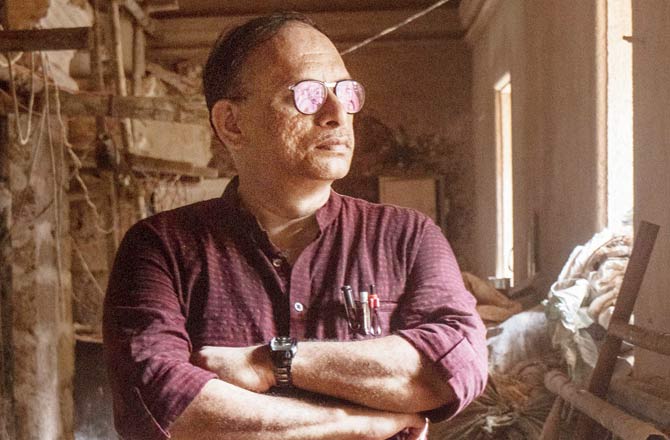
Rahul Chemburkar
The exposed masonry was later washed to remove excess dust particles, before galleting (a technique in which small pieces of stone are pushed into wet mortar joints) it with lime mortar and laterite stone pieces to make the surface ready for plastering. The lime plaster, prepared using molasses made from jaggery and water from the Haritaki or kadukka fruit, was then used to plaster the walls. "We tried to use local, traditional masonry recipes, while preparing the plaster. The ingredients add viscosity, elasticity and strength to the plaster, so that cracks don't develop," says Chemburkar. The false ceiling was removed; the original roof was then propped with new teak wood trusses and rafters. Puffed sheet was used to waterproof the roof, after which it was layered with lime concrete and Mangalore tiles, to retain the original look. "Our efforts will increase the structure's life by another hundred years."
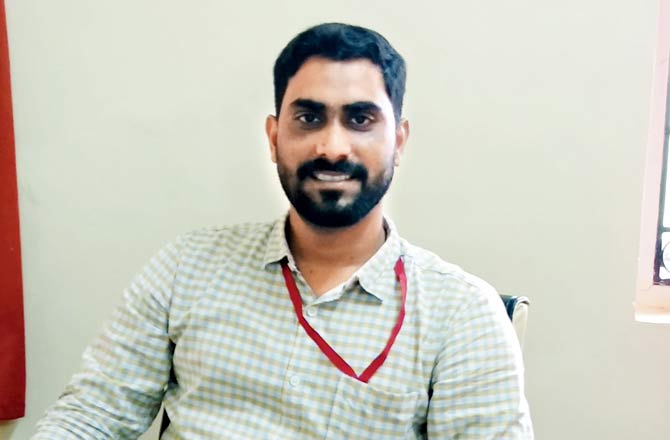
To build a temple for a deity once shunned by colonisers, was "both, a political strategy, and an effort to revive the religion of the land," believes Dr Varad Sabnis from the Directorate of Archives and Archaeology of Goa
Apart from restoring the structure, the archaeological department is also working with Chemburkar and Thakkar to revive structures in its vicinity. The temple complex, which covers 5,017 sqm, has four other shrines, a deep mala and a tali or water tank within. A new retaining wall, influenced by the design of Koti Tirth—the original temple tank in Divar—has been finalised for the tali. The surrounding area is going to be excavated, so that any ancient remnants can be cleaned and retained, like the stone arches and steps that the team discovered during digging.
Once restoration is complete by mid-2020, the archaeological department and trust intend to allow tourists. "This is a very prestigious project," says Sabnis, who is working closely with Blossom Medeira, director of the state archaeology directorate. He adds, "While every monument is precious, for this one, we are applying pioneering thought to restore the aesthetics of the time it was built in. A lot of brainstorming has gone into discussing the best practices to make this possible. We want everyone to take pride in a history that has resisted several interventions."
1668
Year in which Shivaji built Saptakoteshwar Temple
1983
Year structure listed as protected monument by Directorate of Archives and Archaeology of Goa
Kaavi brought back to life
One of the biggest finds the during excavations, was the Kaavi motif on the rock-cut walls above the shrine. Goa-based historian and writer Heta Pandit describes Kaavi, as the ancient art of etching on walls and infilling with a paste of red soil, charcoal and a binding material. "It is also done the other way around, where the red paste is first applied and the design etched to reveal the white lime underneath," says Pandit. Wave and floral patterns, lotus buds, abstracts, and figures of the cobra, lion and fish are common Kaavi motifs. "It was found on walls in sacred spaces in Goa, Karnataka and Maharashtra," says Pandit, of the now extinct art with origins in Goa. When Chemburkar found the motif, he noticed that it had been painted over in oils. He is now working with Pandit to create awareness about the art. "There are no traditional artisans [practising Kaavi] in Goa today. It is a common legacy and we must consider it our collective duty to experiment, study and conserve the art in whatever way we can," says Pandit. The duo is currently experimenting with several motifs, eventually to be used to embellish the walls of the temple. "Shri Saptakoteshwar is the most exciting Kaavi project currently on in Goa," she says.
Catch up on all the latest Mumbai news, crime news, current affairs, and also a complete guide on Mumbai from food to things to do and events across the city here. Also download the new mid-day Android and iOS apps to get latest updates
 Subscribe today by clicking the link and stay updated with the latest news!" Click here!
Subscribe today by clicking the link and stay updated with the latest news!" Click here!







